Every deer hunter should be able to identify white oak trees. White Oak trees are deer magnets throughout the year. In the spring, deer consume young white oak shoots. In the fall and winter, deer eat the dried leaves of white oak trees as forage. But when the acorns drop (from mid-September in the north and late October in the south), you should spend your time deer hunting around them.
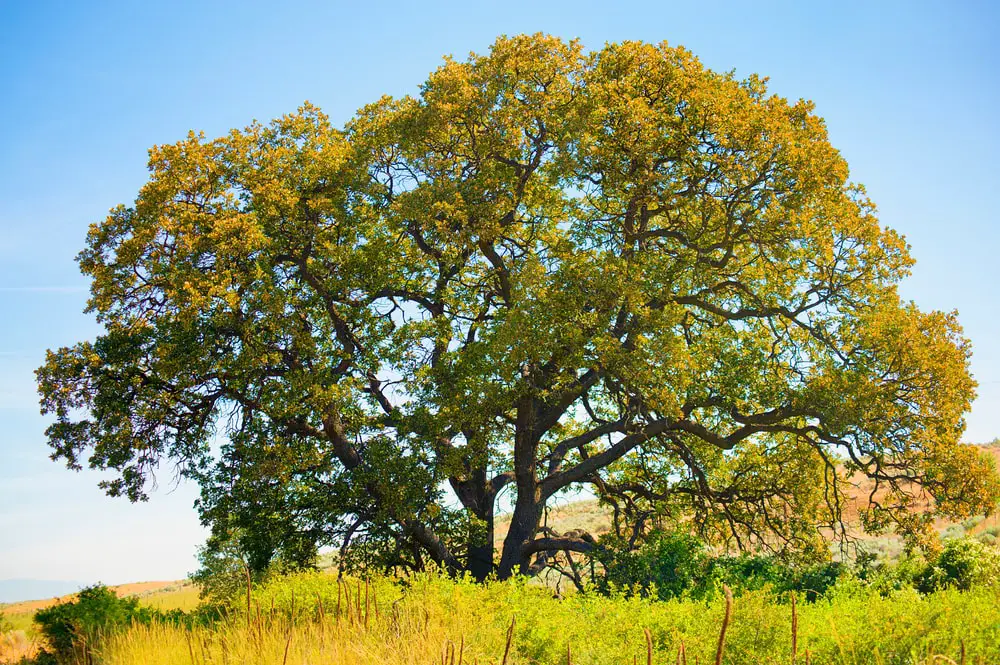
The white oak is a large, robust tree with a short, thickset trunk and huge horizontal limbs. Its spacious branches grow out to create a large, vertical crown. Its bark is pale gray and consists of rectangular scales. The leaves are various shades in the summer, orange and red in the fall.
Related: 9 tips for calling deer all season.
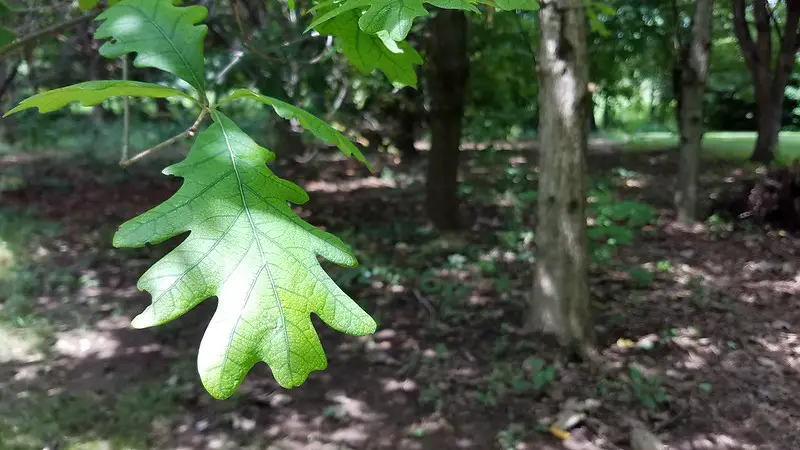
How to identify white oak trees by their leaves.
White oak leaves are five to eight and a half inches long and two to four inches wide. The leaf’s lobes run alternately on the sides and rounded at the tips. Their color is bright green in the summer but turns red in the fall and brownish in the winter.
During the spring, a white oak’s shoots are a wine-colored red.
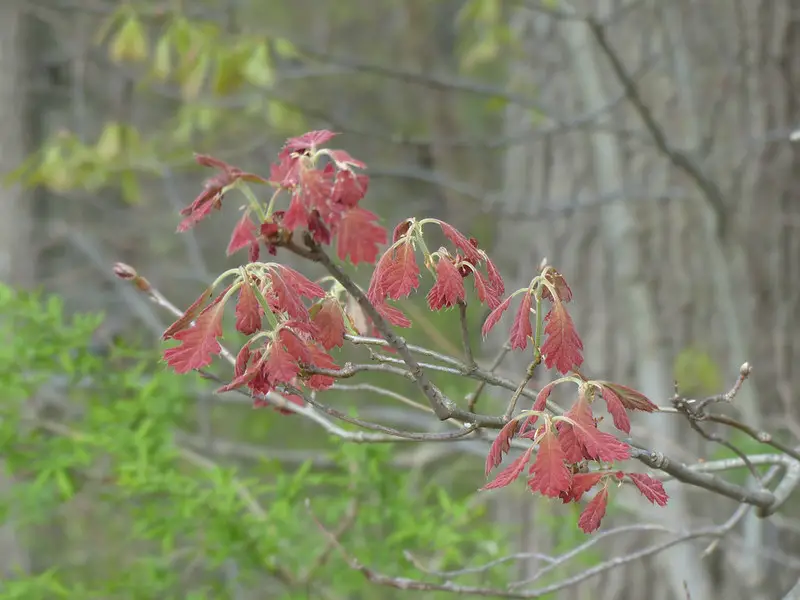
How to identify white oak flowers.
White oaks flower in the middle of spring as their new leaves unfold. Male flowers are greenish-yellow and hang in drooping clusters from the branches. Each tree is capable of producing either male or females tree.
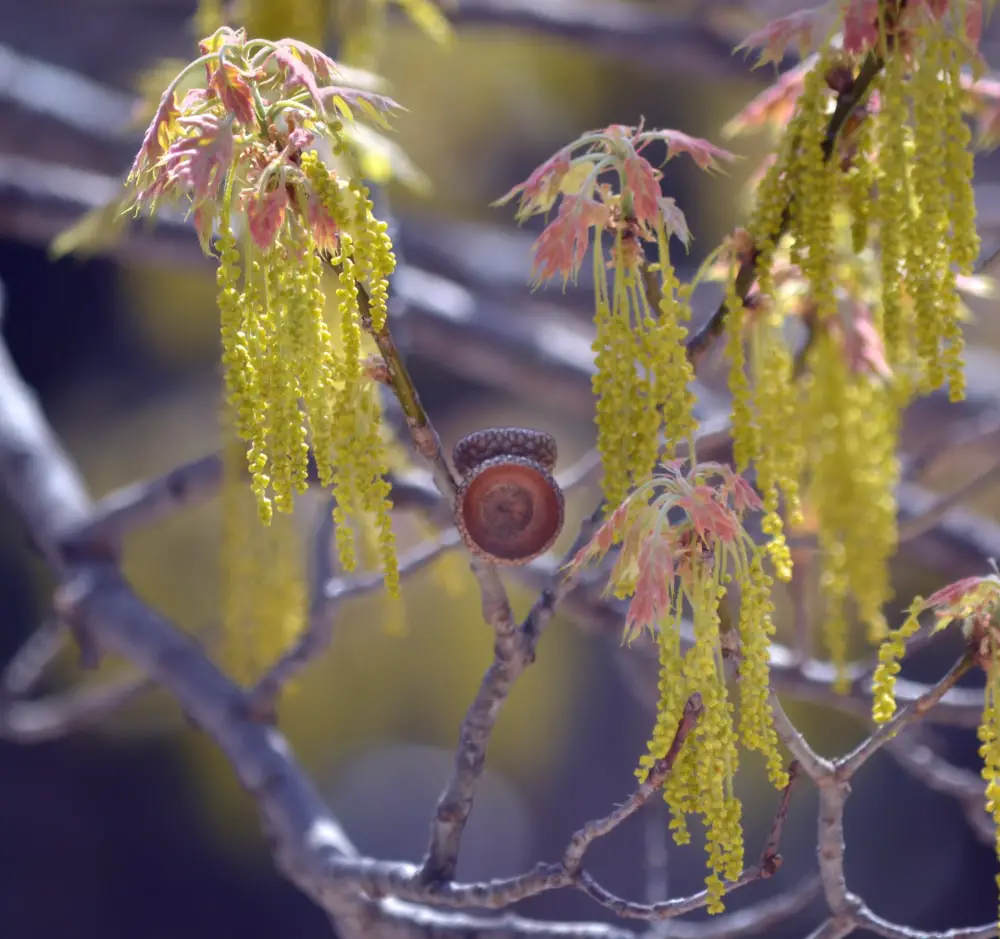
The female flowers of a white oak are small reddish spikes.
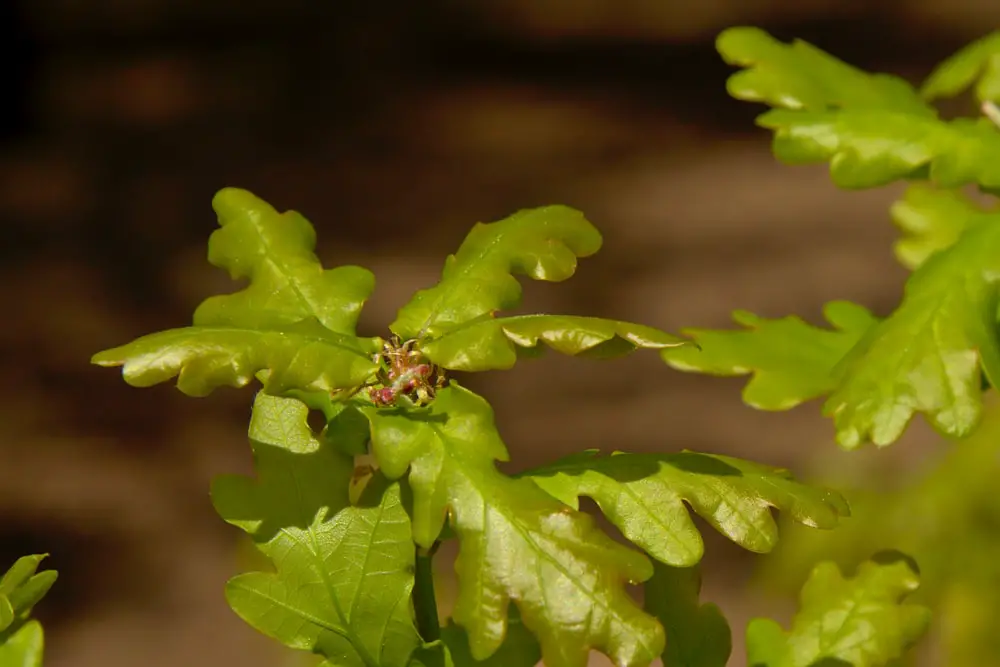
While the fertilized flowers of a female oak tree will eventually become the fruit (acorns) that deer love, they are a favorite treat of squirrels and other animals long before this.
Related: How to plant a deer food plot.
Where to find white oak trees.
The white oak tree grows throughout the Eastern United States. It extends from the northern tip of Florida to southwestern Maine and along the Atlantic coast to as far west as parts of Michigan, Minnesota, Iowa, Kansas, Oklahoma, and Texas.
The white oak tree can be found growing in many woodlands and forests, usually on ridgelines, dry slopes, the bottom of ravines, or low on valley floors.
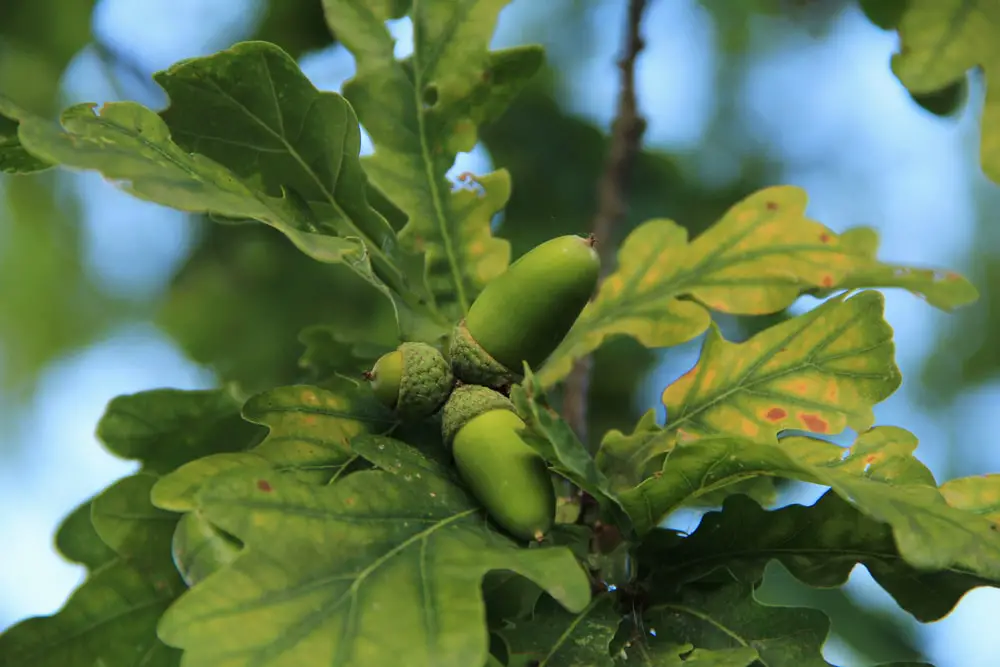
How to scout for white oak trees for deer hunting locations.
Identifying white oak trees is the easy part of scouting for excellent deer hunting locations. The hard part, forgive me, is sorting the forest for the trees. If at all possible, survey your hunting land in December. By then, most other trees in the area will have shed their leaves, but not the white oak.
With the dense foliage gone and ignoring the easily identified pines and other evergreens, it is now much easier to eyeball any potential white oaks. Remember what you are looking for (as described above), large trees with vertical crowns and stocky branches. Pay particular attention to trees growing on ridgelines, dry slopes, the bottom of ravines, or low on valley floors.
How to identify white oak acorns deer will eat.
Deer hunting over edible acorns is a deer hunter’s dream. But white oak acorns have to actually being to rot in order to start germinating. At that point, deer will pass them up. So, how can you tell which acorns will attract deer?
Look for dropped acorns without their caps. Capped acorns are not ripe and the wind or some animal has removed and discarded them before they reached maturity. Acorns with holes them are usually infested with insects. these too can be ignored.
Look instead for a white oak surrounded with uncapped acorns. That tree will bring in many deer for you this year.
Related: How to track a wounded deer.
Why do deer eat white oak tree leaves and acorns?
Deer prefer white oak acorns because they have less tannic acid and are much sweeter than other acorns, such as red oak acorns. While acorns provide little protein, they are high in fat and carbohydrates.
When in season, deer quickly digest acorns and consume them in large numbers throughout the day. And a white tree can produce between 2 to 3 thousand acorns every four to ten years.
The leaves and twigs of a white oak tree provide most of a deer’s nutritional requirements like protein and phosphorus in the spring and fall.
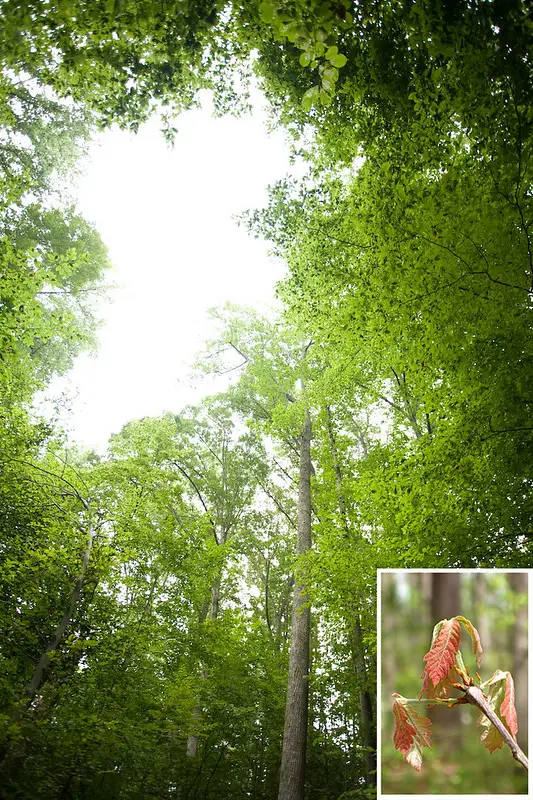
After you identify white oak trees, what’s next?
Possibly a lot of late summer sawing and trimming, but I’m getting ahead of myself.
Finding a white oak tree is just the first step of a three-step process. The next step is critical; determining if this white oak tree will drop acorns this deer hunting season.
In the summer (yep, you need to do your scouting that early), a white oak tree that will drop acorns should bear plenty of green acorns growing on its twigs. Now, you can walk around and make mental notes of what you find, but I’ve done this and had great difficulty reacquiring my target a few months later.
Related: How to age deer tracks and scat.
A mature white oak tree will have acorns growing well above you. You will need binoculars to see them. If you find any, wrap the tree’s trunk in tape and ensure you can spot it later. So, grab some bright survey tape and a set of binoculars, and open up that note app on your iPhone. On your phone (or paper, you dinosaur), note the tree’s general location. The goal here is to use your notes to get you into an area close enough for you to spot the tape.
The final step begins with noting the prevailing winds to select a shooting location downwind of the target tree. Now you simply need to locate a good stand location and start clearing shooting lanes. Creating these lanes is best done well ahead of the archery season. Done early enough, the deer will find the acorns long after your scent and site disruption has occurred.
Related: 4 Deer hunting mistakes you can easily avoid.
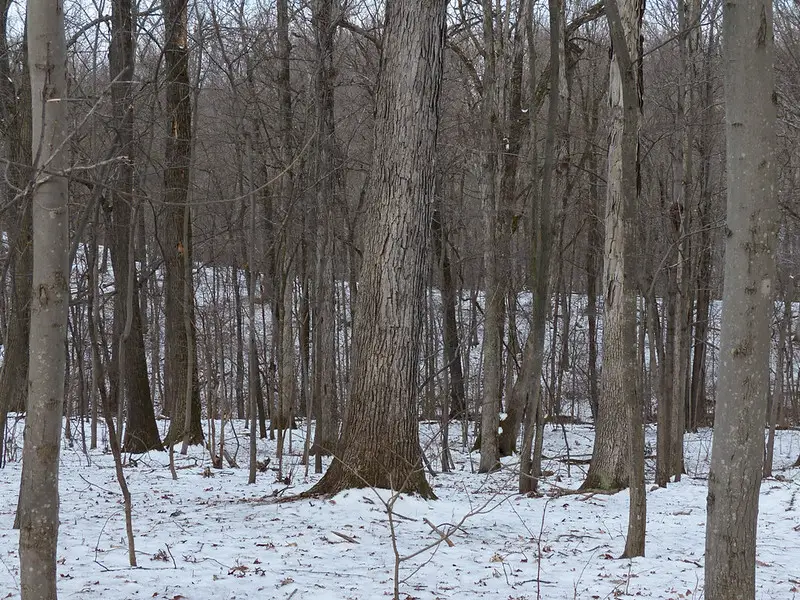
When will white oak trees have the most acorns?
I’m expecting either a huge number of acorns this year, or none—both for two reasons you might not expect. We experienced a severe drought this summer. At the same time, we had no strong winds during this period. The two factors lead me to believe there will be some heavy acorn drops this deer hunting season.
White oak trees don’t typically produce acorns every year. Many researchers believe this is a defense mechanism. By dropping acorns at odd intervals, they ensure predators don’t expect this annual windfall and take up permanent residence around them.
By dropping acorns at unpredictable intervals and in massive numbers, white oak trees guarantee some percentage of seeds will live long enough to sprout.
My local drought and lack of winds could cause a change in acorn production for two reasons. First, the lack of strong winds means the white oak flowers had an excellent chance to pollinate. This could mean a considerable increase in acorn production.
Second, the drought was very tough and may have stressed my white oak trees too much for them to produce acorns in sufficient numbers to attract and hold the attention of the local deer population.
Related: The three best deer hunting calibers.
Deer hunting over white oak acorns.
There’s a good reason so many commercial deer baits contain acorns—deer cannot resist them. In areas where you cannot use deer bait, hunting over a natural food source is often perfectly legal. Deer hunting over acorns requires scouting and planning; you don’t just walk into the woods and wait for an unlucky buck to come within range.
That’s sound like real deer hunting to me.
Related: The best place to shoot a deer.

